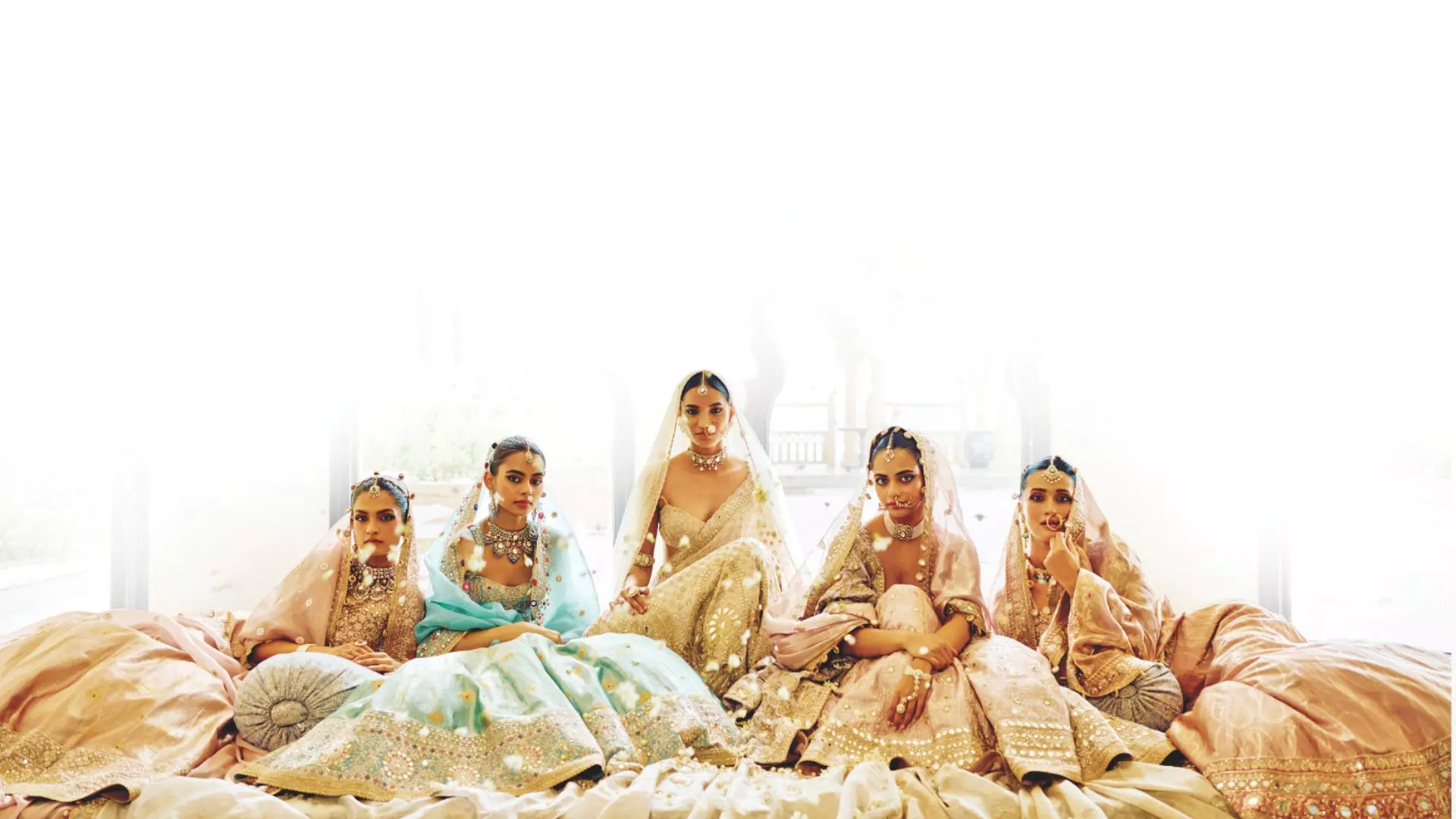The Fine Art Of Reflection
There is a resurgence of mirror work in Indian couture as leading designers are infusing this intricate craft with a blend of traditional and modern aesthetics

Indian couture, with its rich history of intricate embroidery and craftsmanship, has experienced a resurgence of traditional mirror work in recent years, especially in bridal wear. This ancient craft, known for adding a reflective brilliance to garments, has been revitalised by designers who incorporate it into modern aesthetics, bridging traditional and contemporary fashion. From lehengas to sarees, mirror work is capturing the essence of Indian festive and bridal collections.
One of the most influential designers at the forefront of this resurgence is Arpita Mehta. Known for her innovative use of traditional elements in modern fashion, Mehta has showcased mirror work in her collections as a way of paying homage to India’s cultural roots. Her bridal collection, ‘Nazar,’ exemplifies this approach. In ‘Nazar,’ she uses mirror work as a central theme, integrating it with soft fabrics and pastel shades, which depart from the bold colour palette typically associated with traditional mirror work. This nuanced treatment allows the craftsmanship to shine while creating a modern look that appeals to today’s brides. The collection is a celebration of heritage, demonstrating how ancient craftsmanship can be reimagined for a new generation of fashion-conscious individuals. “Gujarat has always been a huge influence on my work — the colours, the mirror work, the whole vibe of it. For Nazara, we’ve drawn inspiration from the timeless elegance of Banarasi weaves, collaborating with weavers in Banaras to create these stunning fabrics. Each piece has a story to tell, representing the diversity of Indian craftsmanship. That’s why we call Nazara a diverse collection. It’s a celebration of different regions, cultures, and crafts coming together in a way that today’s bride can connect with, honouring tradition while embracing modernity,” says Arpita.
Cultural Significance
Mirror work, also known as shisha or abhala bharat, has been part of Indian heritage for centuries, believed to have originated in the Kutch region of Gujarat and later spreading to Rajasthan, Jaipur, and beyond. Each mirror, hand-embroidered onto fabric, was once thought to have protective qualities. According to local folklore, mirrors reflected negative energies or evil spirits, preventing them from afflicting the wearer. This symbolism of reflection and protection imbued garments with a spiritual significance, making them popular in traditional ceremonies and festivities. Beyond its mystical associations, mirror work serves as a cultural marker for different regions in India. Gujarat and Rajasthan are famous for their distinctive styles. The Kutch region, for example, is known for vibrant, colourful embroidery that combines mirrors with motifs of peacocks, flowers, and intricate geometric patterns. In Rajasthan, mirror work often appears in bold, earthy tones, influenced by the desert landscape and celebrating the heritage of the region.
Modern Resurgence
In recent years, the renewed interest in Indian handcrafts has put mirror work back into the spotlight. The appeal of mirror embroidery lies in its ability to marry tradition with modernity. Designers are now reinterpreting this intricate craft, presenting it as a blend of elegance and opulence that complements contemporary bridal and festive wear.
Creating a mirror-embellished garment requires patience, precision, and artistry. Traditional mirror work is done by hand, where each mirror is sewn onto the fabric using a needle and thread, creating intricate patterns. Artisans cut the mirrors, often into circular, square, or hexagonal shapes, and carefully fix them onto textiles with different types of embroidery stitches like chain stitches, herringbone, and interlaced stitches.
The designs are often symbolic, featuring traditional motifs inspired by nature, spirituality, or regional identity. A bridal lehenga with mirror work, for instance, can take days, sometimes even weeks, to complete, as each mirror needs to be precisely placed to achieve the desired visual effect. The labour-intensive process is part of what makes these pieces so special and treasured, carrying forward the artistry from one generation to the next.
Contemporary Bridal Couture
Bridal wear with mirror detailing provides a distinct visual appeal, catching and reflecting light in a way that elevates the entire ensemble. The intricate designs create a shimmering effect that complements traditional Indian wedding jewellery and enhances the opulence of the occasion. Bridal lehengas, sarees, and even kurtas adorned with mirror work have become popular choices among brides who want to honour tradition without sacrificing contemporary fashion. “Brides today don’t want to be boxed in. They want pieces that reflect their personality but still honour tradition,” says Arpita.
Designers are experimenting with different ways of using mirror work, from densely packed mirrors for a bold, maximalist look to more minimalist placements that highlight specific parts of a garment. “Mirror work enhances the bridal aspect, not only for the bride but also for the groom. It's stunning, the lights clashing against your outfit creating a wonderful hue of light surrounding you, you're not just a bride but quite literally an angel,” says stylist Pooja Anita.
Future of Mirror Work
The resurgence of mirror work has created new opportunities for craft clusters in Gujarat, Rajasthan, and other parts of India. By reviving these techniques, designers provide artisans with sustainable livelihoods, helping preserve local craftsmanship. Through collaborative efforts, traditional skills are safeguarded, allowing Indian fashion to continue celebrating its rich heritage. Ultimately, this craft’s journey from ancient cultural origins to high-fashion bridal collections underscores the enduring beauty and relevance of Indian craftsmanship in the global fashion landscape.

